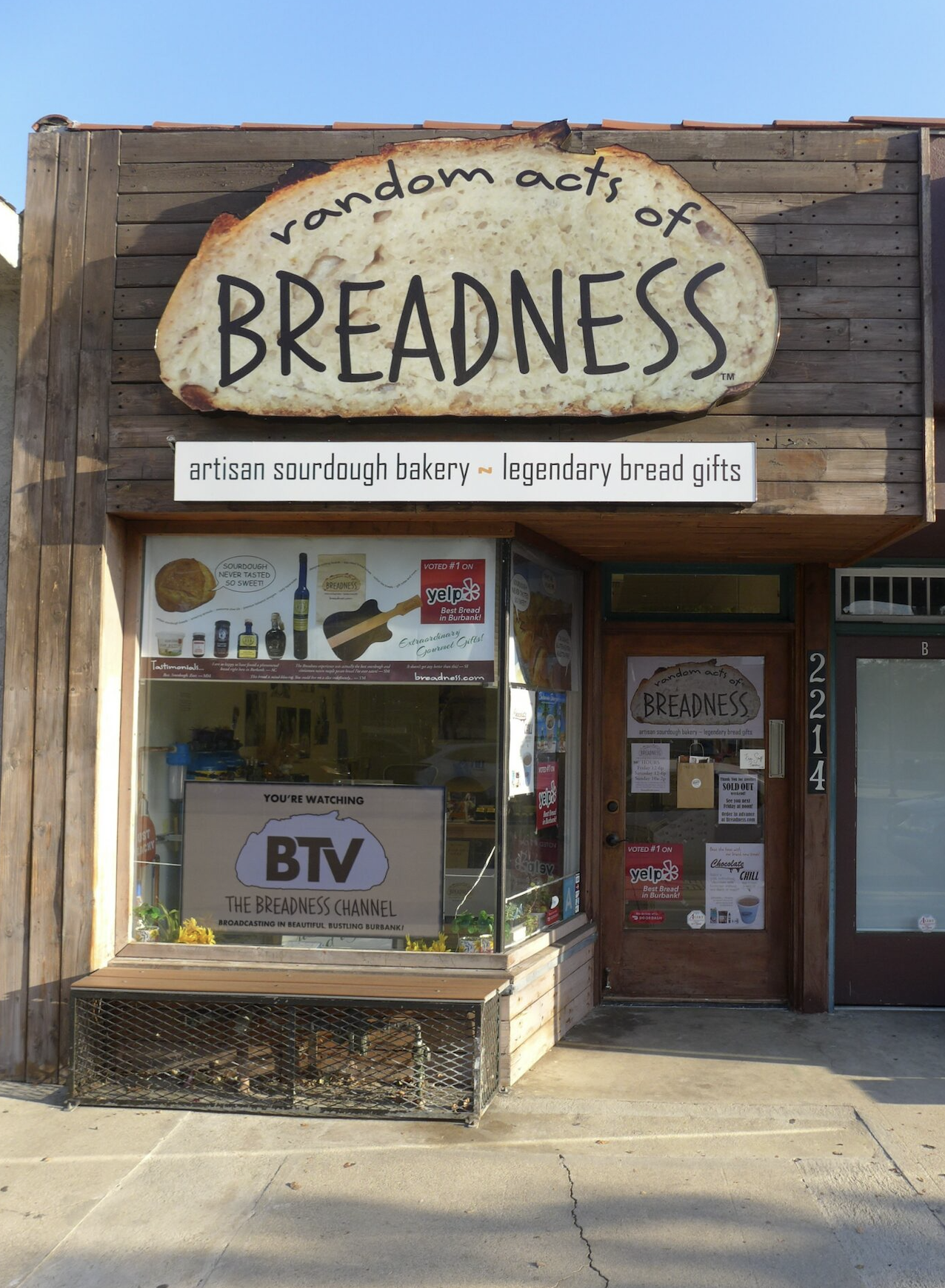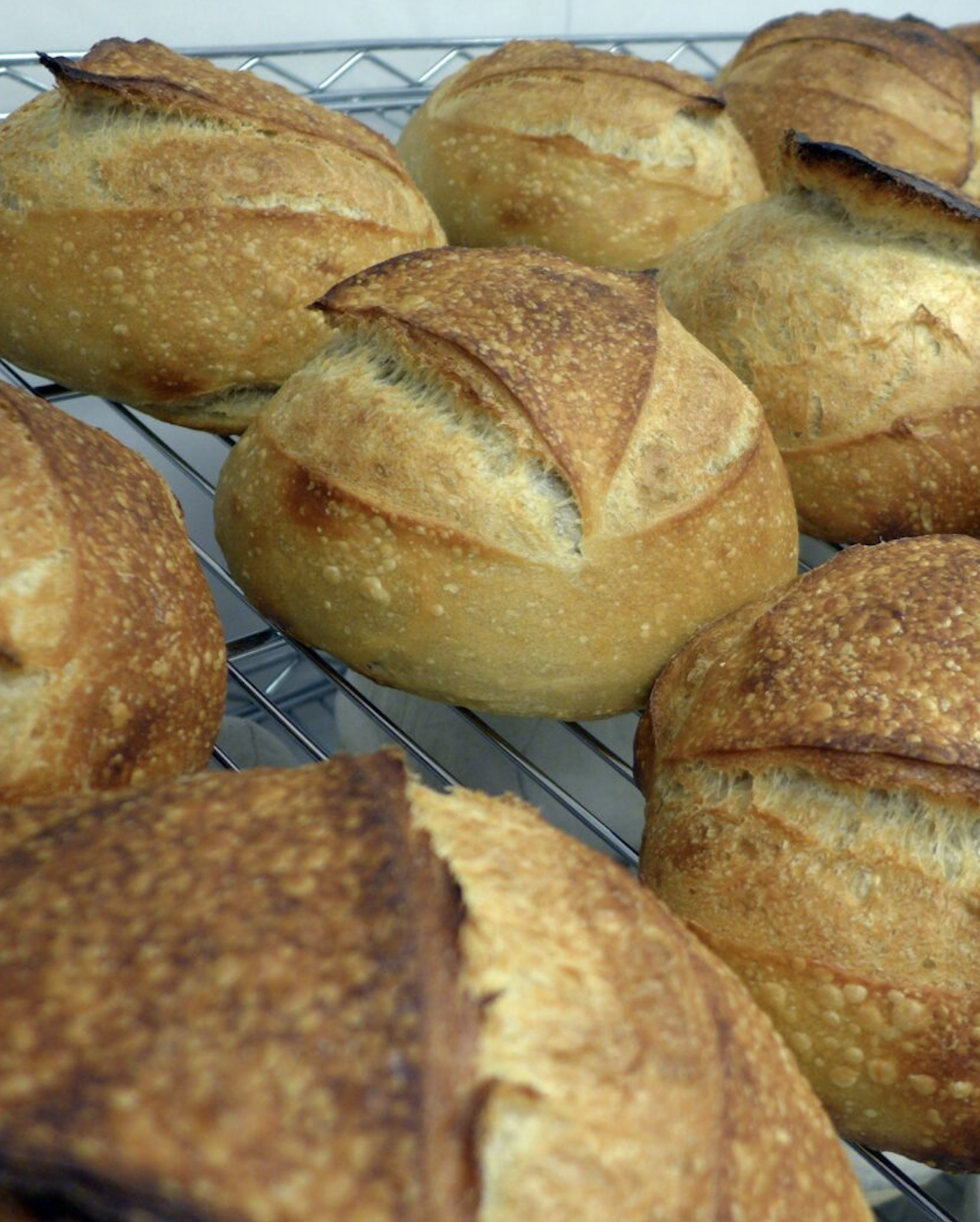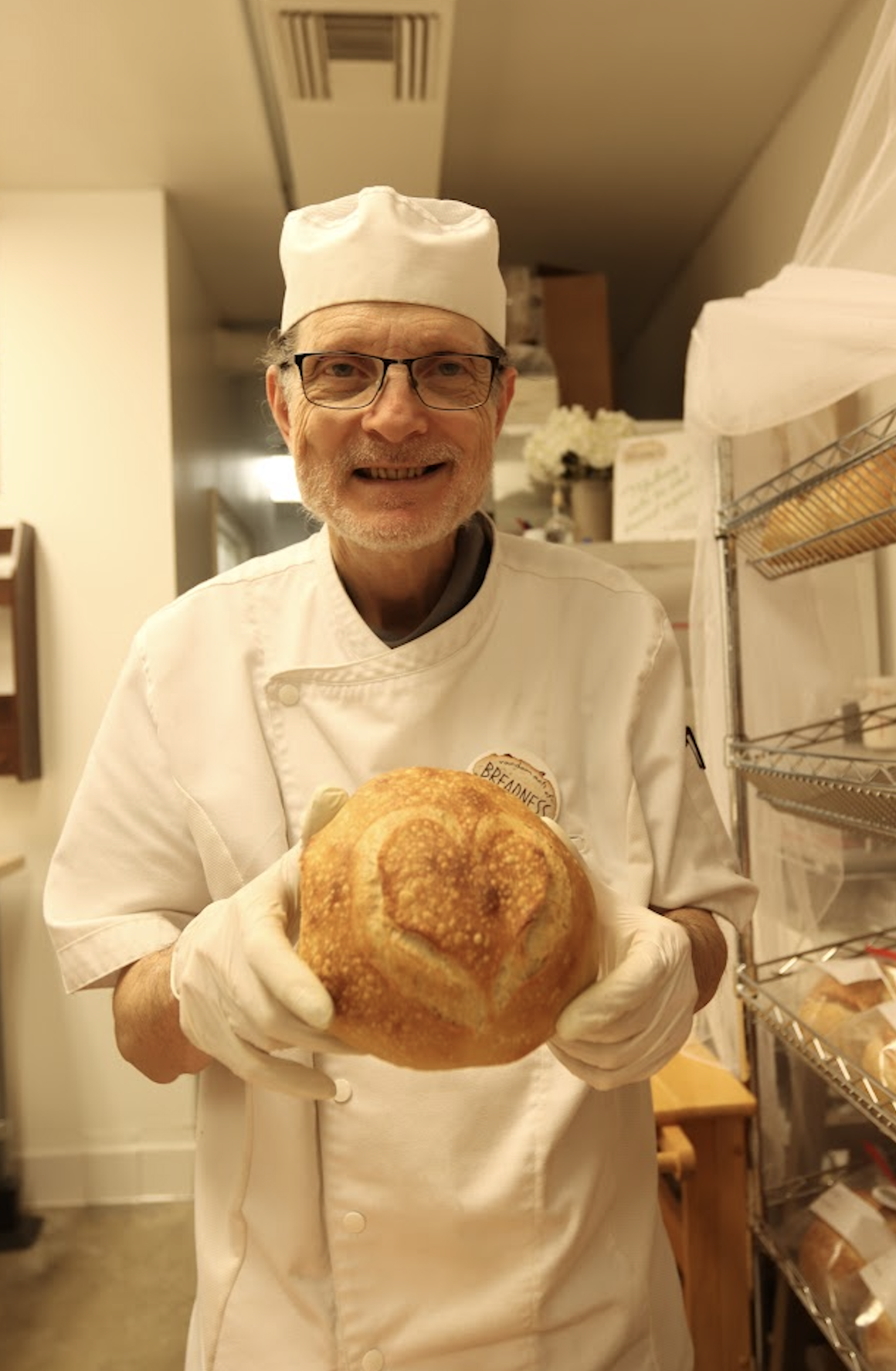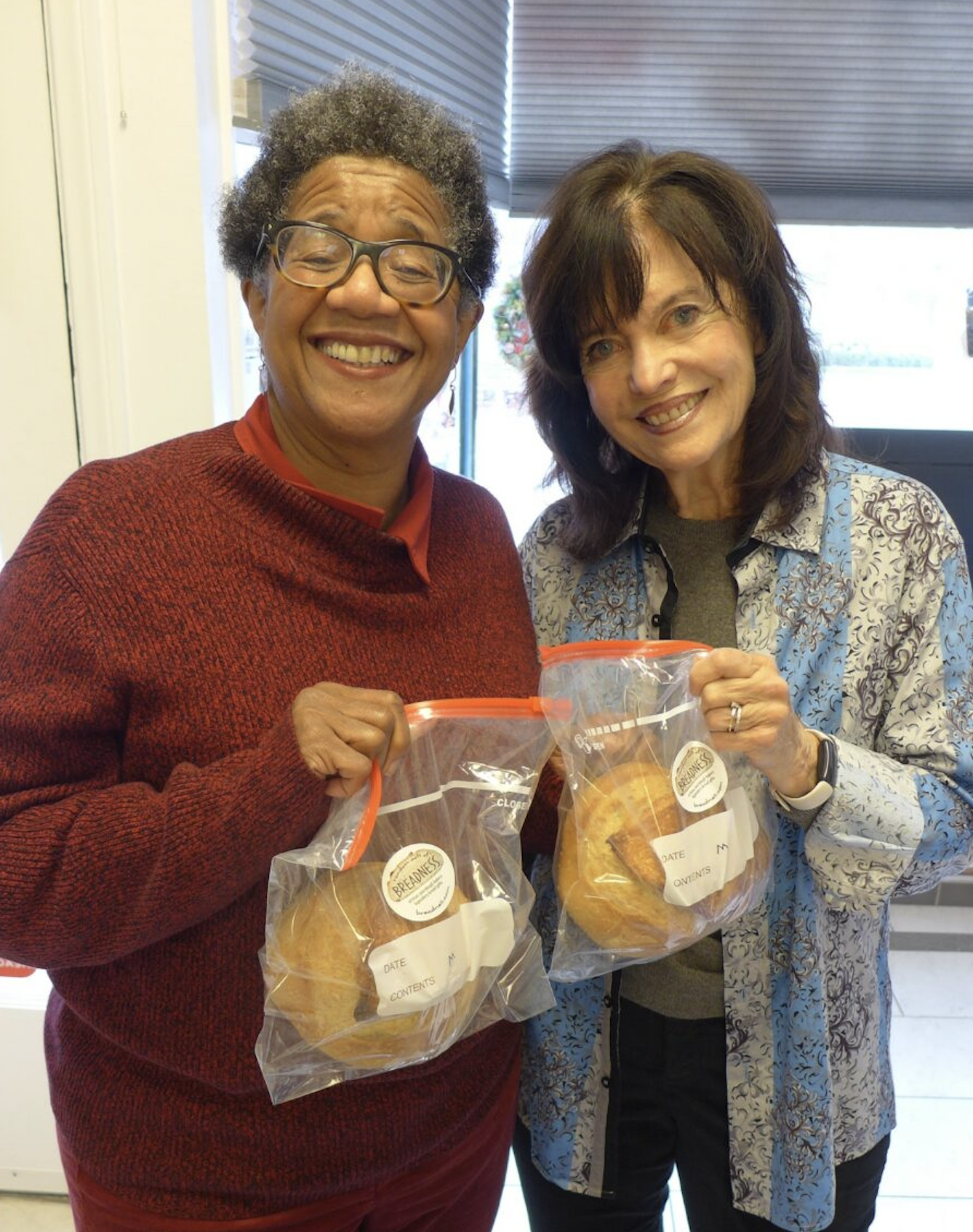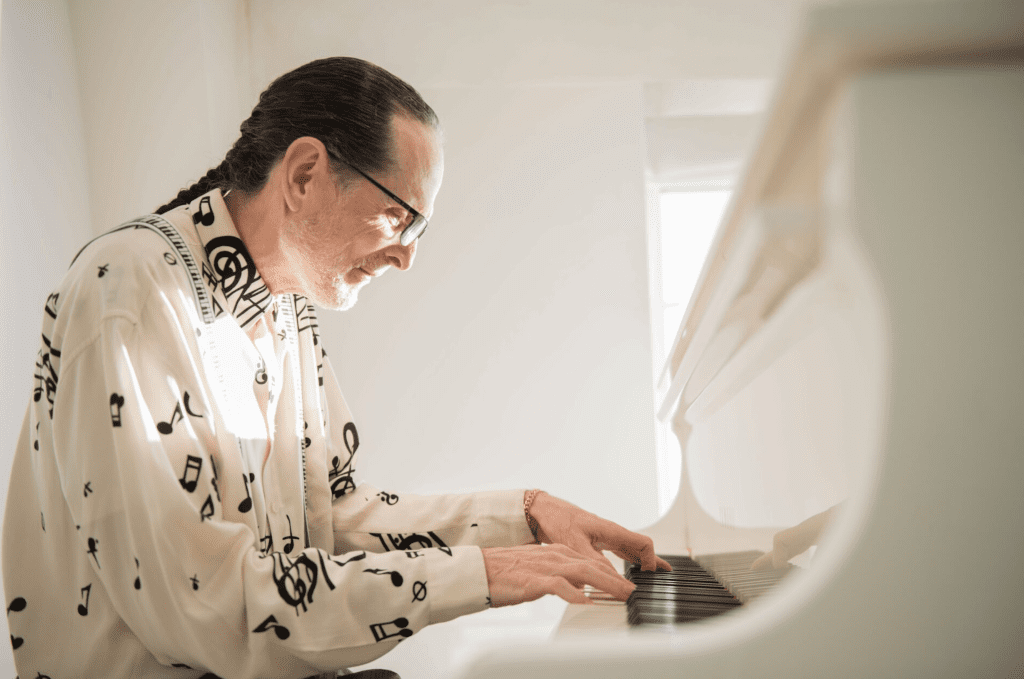Welcome to The Sourdough People, your go-to source for all things related to the art and science of sourdough bread making. Today, we are thrilled to present an exclusive interview with Randall Michael Tobin from Random Acts of Breadness on Instagram. Randall, a seasoned professional in the music industry and a lifetime voting member of The Recording Academy—the organization behind the Grammy Awards—has transitioned his creative talents to the world of sourdough baking. In this interview, Randall shares his journey from producing music to crafting artisan sourdough bread, his inspirations, techniques, and the unique challenges he has faced along the way. Whether you’re a seasoned baker or just starting out, this interview is sure to provide valuable insights and inspiration.
Thank you for visiting The Sourdough People, and we hope you enjoy this captivating conversation with Randall.
Please tell us where you are from and what you love about where you live?
I’m from Burbank California, where I spent the first 7 years of my life. Family and life took me to other locations in the intervening years but in 1988 I returned to Burbank and have been here ever since. My wife and I live in the Rancho Equestrian part of Burbank where some of our neighbours have horses, barns, tack rooms, etc. It’s a bit of country right in the city with the Los Angeles Equestrian Center a couple blocks to the east and The Walt Disney Studios a few blocks west. Griffith Park is within walking distance and features 53 miles of trails available for horses, people and dogs. We love it here, and it’s also where I built my recording studio (see below).
Randall, what initially sparked your interest in sourdough baking, and how did you begin your journey?
A bit of back story is in order here. I started and still run Theta Sound Studio, which has been operating continuously since 1977. I’m a producer, composer, songwriter, engineer, video director/editor, graphic designer, typesetter, web developer, to name just some of the hats I’ve worn professionally over the years (believe it or not, there are several more!). I’ve won industry awards in each of the first five professions listed above and am a lifetime voting member of The Recording Academy (the organization behind the Grammy® Awards). So it was a curious development when in November 2016 I asked myself, “I wonder if I could make sourdough bread?” It was totally out of the blue, but I was introduced to the book “Nourishing Traditions” 14 years ago and that got me started with culturing, fermenting and sprouting. This book is based on the research of Dr. Weston A. Price, a holistic dentist in the early 1900s who travelled the world documenting peoples who lived to be over 100 years old (and were still quite active!). He recorded what they ate, their sources of food, their lifestyle, the condition of their teeth and other factors. The Weston A. Price Foundation was formed to keep his research alive for generations to come. Local chapters were started and publications were created for the Foundation. Sally Fallon, the current president of WAPF, co-authored “Nourishing Traditions” which contains an excellent health primer and about 700 recipes from Dr. Price’s work.
A key takeaway from the book is that all of the foods eaten by these long-lived peoples were processed in one or more of 4 ways before being eaten: cultured, fermented, sprouted and/or boiled for long periods (as in bone broth). These methods made the foods far more assimilable for the human body, neutralizing any harmful elements while unlocking all the natural health factors available. It is interesting to note that Dr. Price wrote “Nutrition and Physical Degeneration,” the first book of its kind to link diet with longevity. No other medical professional had done so up to that time. So, with “Nourishing Traditions” in my kitchen, I started making raw kefir with live kefir grains (given to me by a friend, not unlike receiving sourdough starter that would otherwise be discard from another’s batch) and raw milk (I’m still making raw kefir using the same kefir grains!). One thing about living in California is we have access to raw milk from Raw Farm in Fresno, available at Sprouts Farmers Markets, Lassen’s Health Food stores and Erewhon markets. Among the many recipes in the book is sourdough bread. Although I saw that recipe, I did not embark on that journey until years later. However, the seed was planted by “Nourishing Traditions.”
The journey began in November 2016 with the purchase of an organic San Francisco sourdough starter kit from culturesforhealth.com. I brought the starter to life and then made the sourdough bread recipe that came with the starter. It involved kneading the dough and didn’t have that long of a proofing time. And the recipe called for baking the dough on a pan in the oven. Unfortunately, the result was a big, flat, gray UFO; not exactly my idea of sourdough bread. Even after watching the YouTube video for this recipe, my second attempt was no better. Something was fundamentally wrong. At that point, I decided to check on line and searched for images of sourdough bread.
The first one that caught my eye was a beautiful loaf that turned out to be the cover of the book, “Tartine Bread,” by Chad Robertson. The book was a revelation as I read the first many pages covering Chad’s time spent in Europe learning the artisan way of making sourdough bread. It was all about the smell of the levain, the feel, the texture, the time it took to allow the natural starter to break down the gluten, the then novel baking technique of using a preheated Dutch Oven to steam the bread for the first part of the bake. I was excited to try Chad’s process. The only thing I changed from Chad’s recipe was to not use whole wheat flour as called for in the book. I used organic unbleached white flour at first (soon after I switched to organic unbleached white bread flour which blends wheat and malted barley for higher protein).
This decision would prove prescient in my sourdough journey. The first loaves I made using the Tartine technique were amazing! So much so that, being close to Christmas, I decided to make 4 loaves to give as gifts. My wife wrapped them up beautifully and on Christmas Day, we presented 2 of them to my sisters and the other 2 were given to friends. We were there when each of the gift recipients opened the package, sliced the loaf and took their first bite. The response was shock. I asked, “What’s wrong?” I was told by each, in similar words, “This is the best bread I’ve ever had!” I was taken aback. I didn’t think my bread would have created such an effect. But it did! And I decided since I had to make bread every week to keep the starter going, that we’d keep a loaf and give 3 away! And so the fun began of writing up a list of family, friends and studio clients to give this magical bread to, randomly.
Thus began the concept of Random Acts of Breadness!
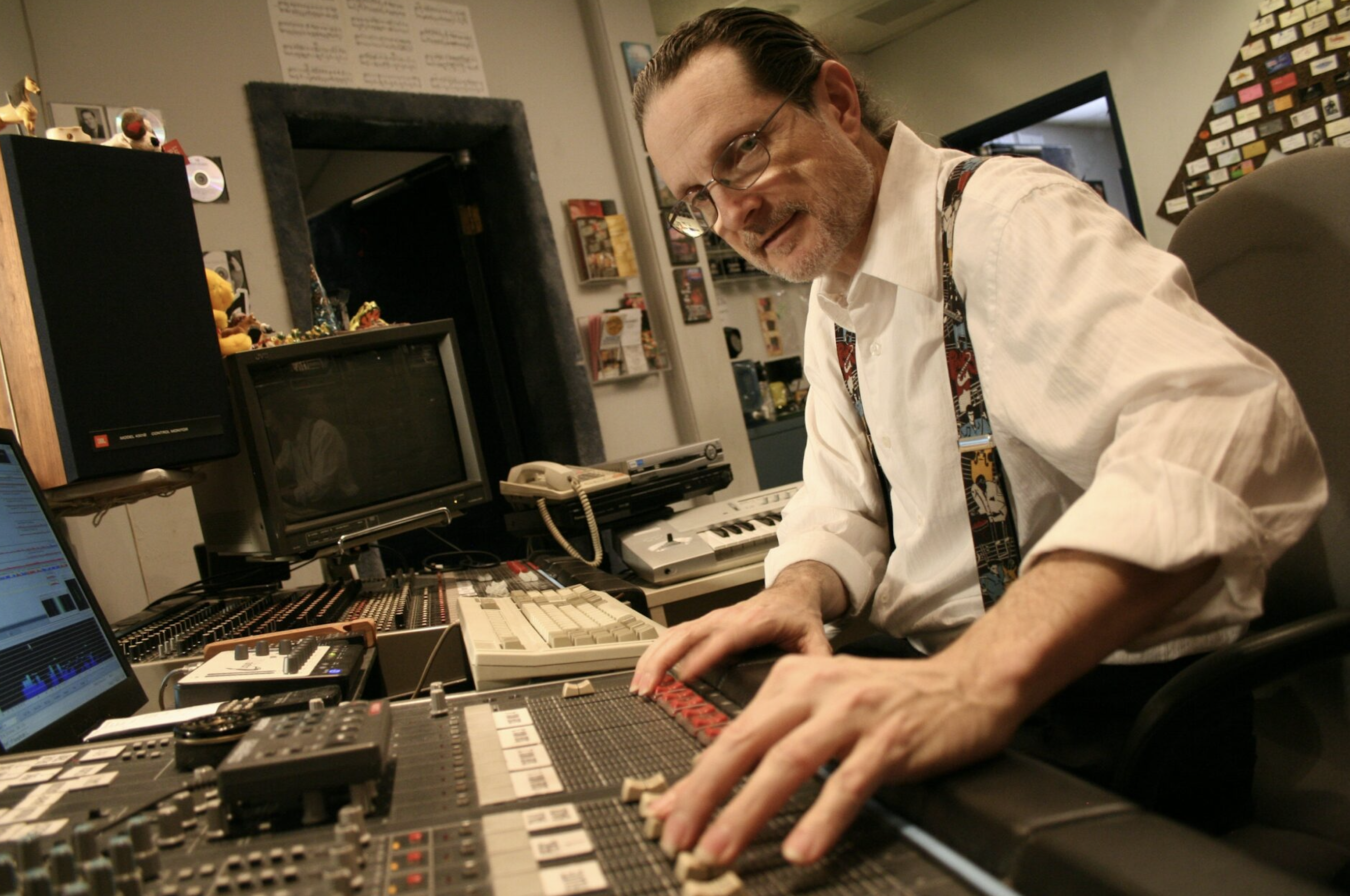
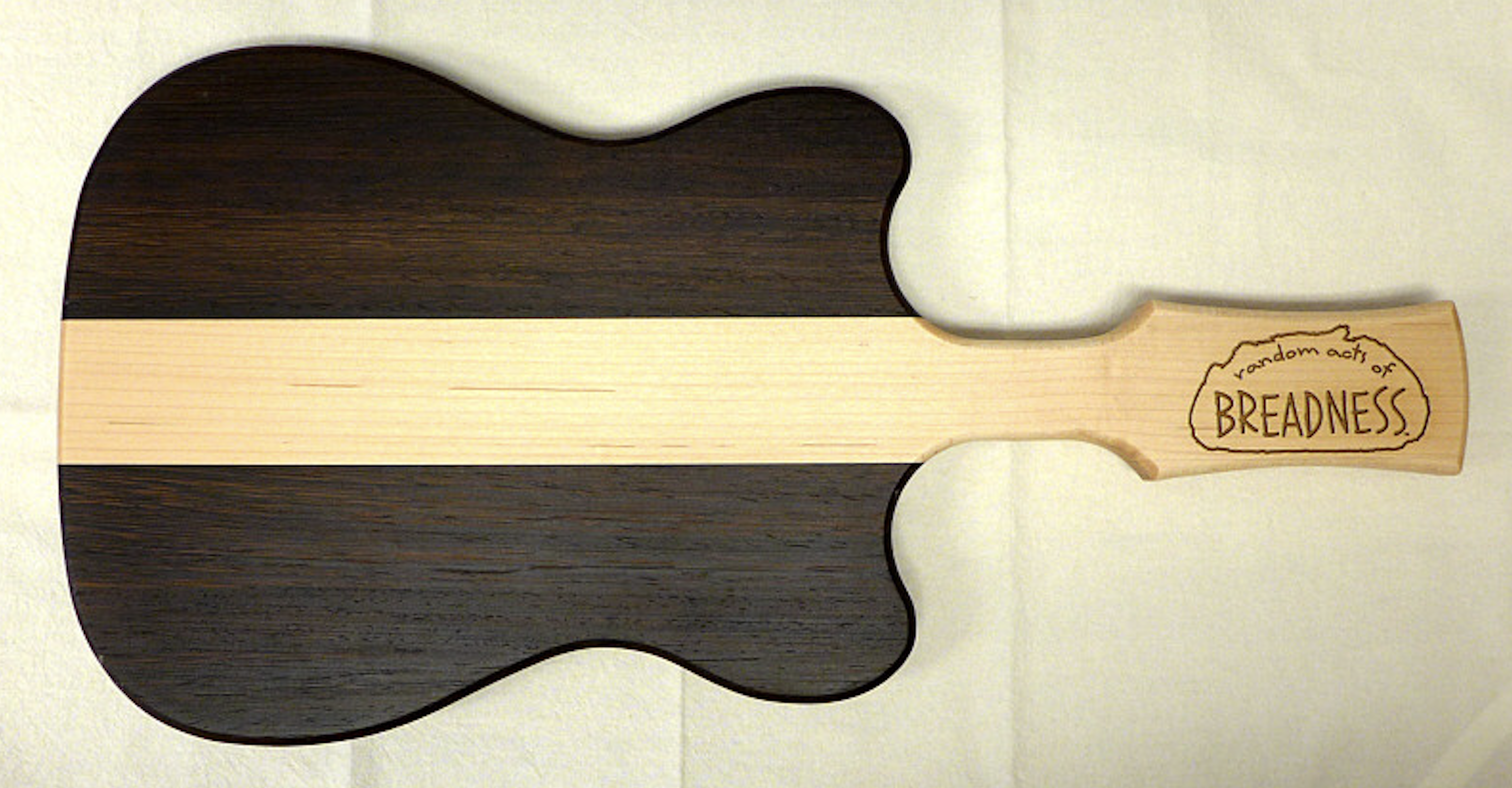
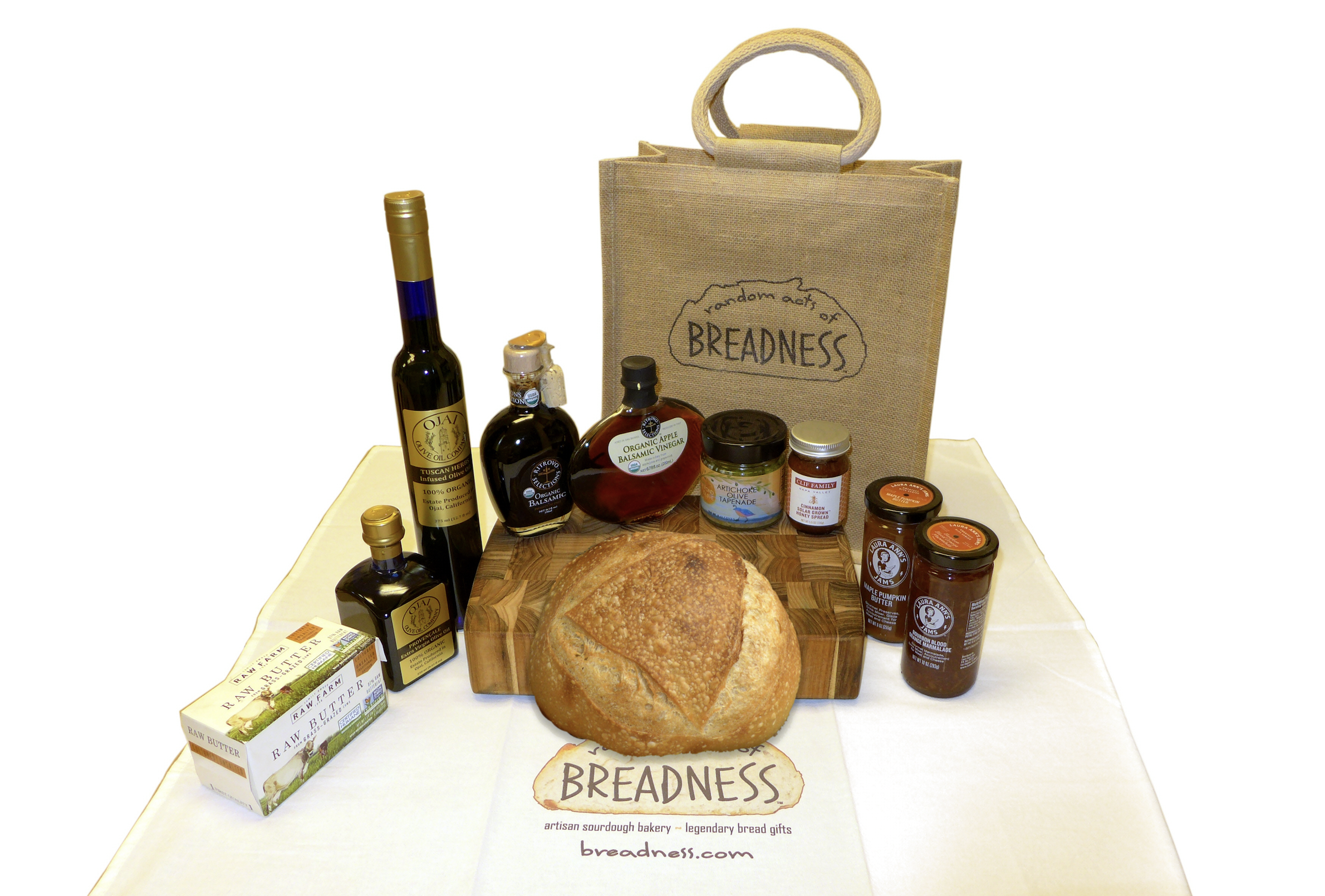
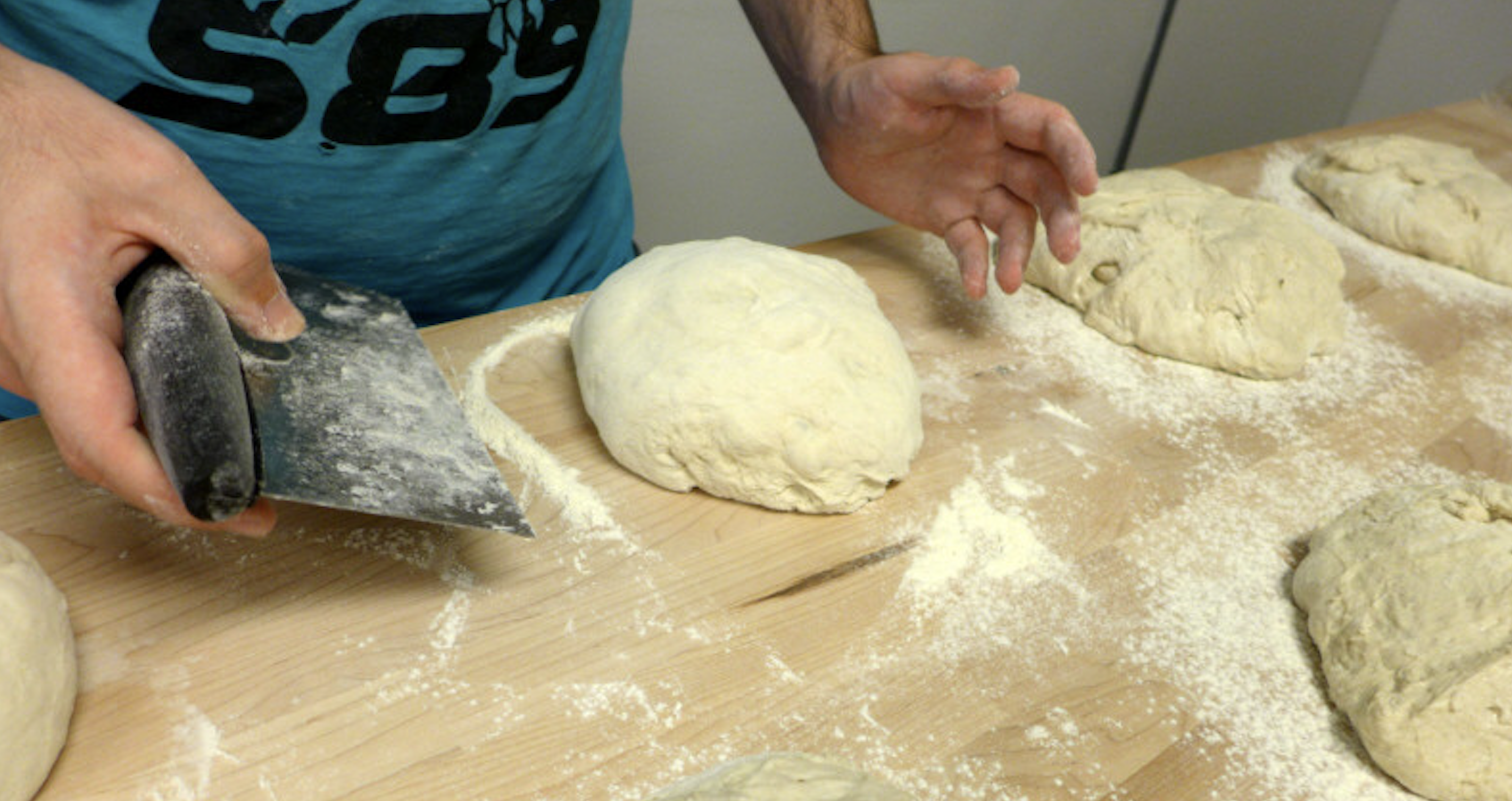
How has being based in California added to your sourdough journey?
San Francisco is famous for sourdough bread. I lived in Novato in Marin County for a year back in the day so I got to cruise to “The City” many times. The bread we make at our bakery started with an organic San Francisco sourdough starter in 2016 so I’ve brought a bit of The City to our city. Due to the flours we use, our sourdough is sweeter than the breads you’ll find up north, but that’s just one of the things people love about our bread; it’s not too sour.
The Los Angeles area has a significant population of people who are into all the things our sourdough bakery espouses: local small business, hand-crafted, organic, gluten-neutral, old-school process, health, longevity, personal service, and our breads raise the bar as to what real bread should taste like. We get to see our new walk-in customers change before our eyes as they take that first bite of Breadness.
How has your approach to sourdough baking evolved since you first started?
I made this bread at home, 4 loaves at a time, for over 4 years before “public demand to buy” exceeded my “it’s only for giving” mantra. When I decided to open a commercial bakery, I needed to figure out how to scale up the quantities without compromising the quality. Thank goodness for YouTube and Jon Przybyl of Proof Bakery in Mesa Arizona! He had a videographer follow him around while he showed every step of his process, one hour-long video at a time. Jon is an amazing soul. He set up his bakery in his garage making 120 loaves a day! I watched almost every video he had and saw how I could apply that to Random Acts of Breadness. Scaling up from 4 to 48 loaves per day (when we opened; now we make up to 80 loaves a day) was a learning experience, but with the right equipment and doing what Jon showed, our first loaves turned out great. We even bought the same brand oven that Jon used, ABS in Iowa, albeit Jon’s oven was a 3-pan 4-deck beast and ours is a 2-pan, 2 deck workhorse (with steam injection, of course).
Do you have a signature sourdough recipe or technique you’re particularly proud of? Can you share a bit about it?
I ended up using Chad Robertson’s Tartine Bread recipe and process with some ingredient changes: I use no whole wheat, just organic unbleached white bread flour (wheat and malted barley) and organic light rye. The water we use for the dough is Crystal Geyser Alpine Spring Water and we use Redmond RealSalt (fine ground) as the salt. Our organic starter was discussed earlier.
After the artisan sourdough Country Loaf was perfected, I decided to make an organic Cinnamon Raisin Maple Walnut sourdough loaf. After a few tries (mostly to reduce the sweetness from the raisins and maple syrup until all the flavors blended just right) I had a most wonderful bread that was not only great untoasted or toasted, but it also made the most amazing French Toast. And instead of syrup, I used raw butter on top.
After we opened, we found that some people could not eat walnuts so I tried pecans instead. That seemed to be better for our customers, though walnuts have a stronger flavor that some prefer. One thing that changed after we’d been open for 5 months is we got a commercial slicer from JAC Machines in Belgium. The Varia SELF is a variable-width slicer with 3 programmable thickness choices accessible from the front panel. I didn’t want a fixed multi-blade slicer for our bakery because people like different thicknesses. The Varia looked like the best fit for us. And I went to see one in action at a Pavilion’s supermarket a few miles west of our bakery. For health safety reasons they would not slice my sample loaf; it cut one of their loaves just fine. But a new unit like theirs would have cost close to $18,000 after shipping, electrical, and tax. My contact at the Boston office found me a 2015 unit that had been used to demonstrate that model at baking trade shows. He put a new blade in it, gave me a 2-year warranty and told me there was a major service center in Orange County should the unit require service. With shipping, electrical and tax it came to about $6700, which was more in our budget!
Now the point I’m getting to is that once the unit arrived and we got it all installed and working, we found that it destroyed our Country Loaf boules, but it sliced the Cinnamon Raisin Maple Pecan loaves okay (also boules). That was not what I was expecting! I called my contact in Boston and he passed my problem on to Belgium. A few days later I received word that I needed to let our loaves rest longer. “Rest longer?” I’d been baking this bread for 5 years and usually sliced it (by hand) about 6-8 hours out of the oven. And when we opened the bakery, we baked on Friday about 10 a.m. and told our customers to wait until dinnertime before slicing. Same for the Saturday bake. So I did some research and discovered the art of curing sourdough bread, and that curing time was based on what flours were in the loaf.
We have some rye flour in our recipe and rye called for up to 24 hours of curing. So I tried an experiment: let the bread cool for 4 hours, then place bread in the bpa-free plastic zip bags we have always used to store the bread, and let it sit overnight. The next day, I sliced the bread on the Varia and it worked! Not only that, but the flavor was more intense and, we found that the loaf lasted longer on the counter (about a week, sealed in the bag) than if it was sliced the day it was baked (about 3-4 days). That revelation shifted our dough work and baking one day earlier for sale the next day. It also opened the opportunity for more shipping options as our bread would be curing while in transit for 1 or 2 days. So there’s the detailed answer to your question!
Who are some of the people, brands, or companies in the sourdough industry that have inspired you?
As mentioned earlier, the Weston A. Price Foundation, Chad Robertson, and Jon at Proof bakery. And because I got into this world years ago, I like hearing the stories from local home sourdough bakers who took it up after March 2020. Many of them have come to our bakery and have tasted and bought our bread.
What are your must-have tools or favorite equipment for sourdough baking, and why?
Your best “tool” is your hands. So much of the dough making process is hand work: stretching and folding, dividing, shaping, final stretch and into the proofing baskets. The next day, scoring and baking. We use unbleached, non-toxic parchment to bake on, placing 6 to 8 loaves on the peel with the parchment underneath, score the loaves for 2 peels, then slip them into the deck oven. My scoring lame is quite different than most, as you can see here:

How do you source your ingredients, and do you have any specific preferences or tips regarding flour, water, or salt?
I started with Bob’s Red Mill All Purpose organic unbleached white flour. It turned out pretty good. But as I continued to evolve, I started checking out the sourdough forums on line where bakers were singing the praises of King Arthur Bread Flour. So I got the organic version of that flour and the results were noticeably better! Soon after I was experimenting with adding light rye flour to our blend. Only problem was there was no American company that I could find that made such a flour as an organic product.
I eventually found Dove’s Farm in England via Amazon and ordered the organic rye from them. It was expensive because of the shipping, but I wanted organic. But when 2020 rolled around, Dove’s Farm stopped shipping abroad. And flour in general became scarce due to the number of people taking up sourdough breadmaking! Fortunately, I had several 5-lb. bags of bread flour frozen and that kept my starter alive for months. But when the bread flour was back in stock, I still had no rye flour to blend in.
After much research, I found an organic light rye flour at Janie’s Mill in central Illinois. I got a sample bag and was impressed with the quality and the result. So Janie’s Mill became our new supplier of organic light rye and we’ve been using them ever since. The water and salt I covered earlier, but there’s another water factor that’s also important: the city water necessary for the steam-injection system in the oven. With all the clean ingredients we used for making our breads, I wasn’t about to let it all be contaminated with city water for steam. So I invested in a “whole house” water filtration system like the one we’ve had at our home for many years. The bonus is that that system filters all the water in the bakery so washing our equipment and tools and hands is done with toxin-free water.
Can you share a particularly challenging experience you’ve had with sourdough baking and how you overcame it?
I have a blog that ran for 10 episodes before we opened. In the months leading up to our opening, there were many adventures, some of them quite dramatic. One in particular was before we officially opened, I was setting up the premises and spending many hours at the bakery (formerly an ice cream and pie shop called Quenelle). We had new equipment which consisted of a dough mixer, a 3-door refrigerator, a 2-door freezer, proofing cabinet and our deck oven. The refrigerator and freezer have digital temperature displays near the bottom and they usually read around 36 and -8 degrees, respectively.
I just happened to look down at the display one evening and saw “92” on the readout! I opened the door where I kept the starter in a tall bucket with a lid on it and it had blown the lid off and starter was everywhere! I quickly grabbed the bucket which was filled to the top with very active starter and placed it in the sink. I then touched the top of the starter with a spoonula and it dropped to the bottom like a souffle. There was less than an inch of starter at the bottom so I transferred some of it to a glass jar, added flour and water, marked the level, then set it aside while I turned my attention to cleaning up the disaster area in the fridge! The starter did not die, and it’s been going strong ever since. I’m just glad that this happened before we ever opened!
What do you enjoy most about baking sourdough, and how does it impact your daily life?
I love the randomity of the bakes. Each loaf is unique and all the ingredients plus the weather conspire to create usually-desirable variations. Sometimes we get “Punky” loaves that are tall and the ears are spikey, and other times we get “Puffy” loaves where the ears are more close to the crust, there’s more air bubbles and the boule shapes are wider and not as tall. The weights are the same, but puffy loaves look bigger. Beyond that, I enjoy watching new customers take their first bite of the sample Breadness we offer; we see their life change in an instant. We don’t sell bread, we make people happy! The bread just happens to be the item that started it all for me.
How do you balance tradition and innovation in your sourdough baking practices?
I learned from Chad Robertson’s book (Tartine Bread) how to make this bread from scratch the old-world way. It’s a workable technique which I modified in terms of choice of flours (no whole wheat; we use organic unbleached white bread flour), use of parchment instead of corn meal, and the water and salt we use are probably different than most bakers use. As for innovation, the second loaf we make is a Cinnamon Raisin Maple Pecan Sourdough. And during Christmas we make a GingerBread Sourdough. Both of our specialty breads are not really sweet; we leave room for toppings to share the sourdough flavor space.
From an aesthetic viewpoint, we have a standard triangle score for our boules, a diamond score for our batards, and a heart score for our petite loaves. On special dates we’ll try to create fun scores such as 4-leaf clovers for St. Patrick’s Day, Jack-o-lanterns for Halloween, hearts for all our loaves for Valentine’s Day, footballs for Super Bowl, Christmas trees for the holidays, etc. We have fun here!
Have you noticed any new trends or innovations in sourdough baking recently?
We’re so busy at our shop I haven’t had time to explore other bakeries. But Aaron Zober wrote an excellent blog featuring the best artisan sourdough bakeries in the LA area. From his article I learned about several other innovative artisan shops in the area. Everyone of these artisans has their own spin on this tradition, which shows we have a living, breathing culture of bakers emerging.
What are some common misconceptions about sourdough baking that you’ve encountered, and how do you address them?
Many people who walk into our bakery like sourdough bread but don’t know how much work and care is involved. Part of our “breaducation” for new customers is informing them how our bread is made. We tell them it’s organic, we use a San Francisco starter that began in 2016, it’s made the European way, taking 3 days for the starter to do its magic to the dough, rendering it gluten-neutral so people with gluten sensitivities can eat our bread (by actual “tastimonials,” nearly 100%), how Breadness becomes a resistive starch, especially if frozen then thawed and toasted and eaten with a good fat like raw butter, avocado, extra virgin olive oil, etc. This clears up any misconceptions they might have had. Many people dislike sourdough because of its acetic taste. Our bread is naturally slightly sweet, due to the light rye flour we add to our blend. Once they taste our bread, they get the difference. Several customers have lived in San Francisco and have told us they prefer our sourdough to loaves they bought in The City (as the locals call it). Lastly, as covered earlier, we cure our bread for 24 hours before we sell it.
In your opinion, what is the most underrated aspect of sourdough baking?
Most folks are unaware of just how much time and care it takes to complete the entire process of creating artisan sourdough breads. Once we show our customers how it’s done (we give bakery tours that cover all the steps in about 15 minutes), they really appreciate all that we put into making our breads and leave our bakery with that knowledge.
Are there any books, videos, or online resources you’d recommend to those wanting to learn more about sourdough baking?
I started with Chad Robertson’s book, “Tartine Bread.” It’s what worked for me. I modified the flour choices but followed the process which resulted in amazing sourdough bread. And props to Jon at Proof Bakery in Mesa, Arizona, for his very helpful YouTube videos. They were invaluable to me being able to scale up our production to our current levels at our commercial bakery.
What advice would you give to someone just starting out with sourdough baking?
Be prepared to spend the time necessary to learning this craft. Once you start, you need to decide to stay with it or walk away. There’s no other choice. Starter is a living thing and needs to be used and fed at least once a week. I embraced this endeavor and it worked out for me as my recording studio is just steps from my kitchen and I could do my dough work every 30 minutes with a short break during sessions. And, of course, give away most of what you make as, unless you have a large family, you won’t be able to eat it all!
How do you engage with your followers and the sourdough community on social media? What’s your style?
I started documenting my journey in April 2021 with “The Breadness Blog – the best reality show NOT on The Food Network!” These episodes were/are posted on the breadness.com website. I also e-mailed these episodes to our growing mailing list that I started back in 2019. I also created Random Acts of Breadness pages on Facebook and Instagram. Once we opened, I created pages on Yelp and Google My Business, both of which display our amazing customer reviews. Up until a few months ago, I was creating all the social content. But now we have a new person on the team who is great with social so I’ve turned much of the content creation over to her. She’s the one who found TSP so I am grateful for that. Since that blog was retired after episode #10, I’ve published an e-mail newsletter every week since our grand opening in August 2021. Anyone can read the latest issue and over a year’s worth of back issues.
Have you participated in any collaborations or community events related to sourdough baking, and what was your experience?
We haven’t had any such events per se. I have held private workshops for school classes and a small group of chefs from the American Culinary Federation. The students and the chefs loved the 2-hour workshops and I was invited to join ACF as a Professional Culinarian, which I did.
What’s your favourite sourdough recipe to bake for yourself, friends, or your loved ones?
Sourdough Pizza! It’s more work than sourdough bread and it takes 4 days to prep the crust, but the results always bring such comments as, “This is the best pizza I’ve ever had!” I use a technique from another book where part of the bake is done in a skillet on the stove while adding toppings and the rest of the bake is done in a preheated broiler or pizza oven (still in the hot skillet). The final hard-cheese grating, spices and fresh herbs go on right out of the oven. The toppings I use are Plant Paradox-friendly, too.
Do you have any tips or suggestions on how to manage a healthy sourdough starter culture?
Keep the starter in a clamp-seal glass jar. After using it for bread, refresh with the proper amount of flour and water, mix well, reseal and place the rubber band at the level of the starter so you can monitor its growth. Place in the fridge and be mindful of it every day. It should last a week before needing to be used for bread, of for refreshing. Depending on the growth, you may need to discard some before refreshing.
Do you have any upcoming projects or plans related to sourdough baking that you’re excited about?
I’m looking into opening our second bakery in the Tampa Florida area. By having a presence on the east coast, shipping to that part of the country is far more affordable and much faster!
What do you hope to contribute or be remembered for most in the sourdough community?
A record producer/musician who took an idea of making sourdough bread and let it lead me to places I’d never even imagined. If you love something enough to do it for free, you’ll be successful because of that love.
Can you describe a moment when you felt particularly proud or fulfilled in your sourdough baking journey?
I feel proud every time someone new comes into our shop and tastes Breadness for the first time. Their reactions and expressions are priceless. But certainly, a key moment was opening day in August 2021 when we had a line out the door and we sold out in 2 hours! The next day we sold out in 1.5 hours and had a waiting list for the next week. That was when I knew that our bread was as good as my friends and family said it was!
If you could give one piece of advice to your past self when you started sourdough baking, what would it be?
The way this has all turned out, I wouldn’t have changed a thing. I took on every challenge this endeavour offered and kept raising the bar. It was and still is so much fun to make people happy from something that I created and taught others how to make as well. And like a musical symphony, I’m always looking for new ideas to feed the body and soul.
Is there anything else Randall that you would like the community to know about you or things you would like the readers to potentially purchase or subscribe to?
Since this interview is being read by other sourdough bread makers, they might not be potential customers of ours, but if anyone is in the Los Angeles area, I invite you to come see our micro-bakery, taste our breads and complementary products, and just talk about the magic of sourdough bread. It’s certainly been a magical journey for me (so far) and I would love to see more people bringing more joy into the world with the shared passion.
Closing thoughts
We hope you enjoyed our interview with Randall from Random Acts of Breadness. His journey from being involved with the organization behind the Grammy Awards to the world of sourdough is a testament to the passion and creativity that drives the sourdough community. We want to thank our readers for joining us in this delightful conversation.
For more stories and tips on sourdough bread making, follow The Sourdough People on Instagram. Join thousands of Canadians and people around the world by subscribing to our email newsletter. If you have cool stories or topics related to sourdough that you’d like to share, please use our intake form to send them our way. We love featuring stories that others can learn from and enjoy.
Thank you for being part of our sourdough-loving community!
